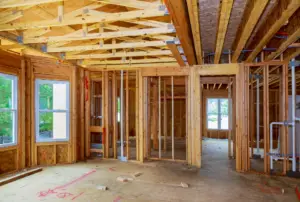When considering the purchase of a new home or commercial property, a pre-purchase building and pest inspection is crucial. It’s an essential step in the buying process, helping to identify any hidden problems that could cost you time, money, and peace of mind.

One key aspect of this building pre purchase pest inspection report cost is identifying signs of pest infestation, which can cause significant damage to a property if left unchecked. Here are 11 critical signs to watch before scheduling your own building pre purchase inspection, report or pest inspection service.
1. Visible Damage to Woodwork
Visible damage to woodwork around windows is a telling sign that shouldn’t be ignored during routine cleaning and maintenance. Over time, moisture and pollutants affect the glass and can seep into wooden frames and sills, causing warping, rot, and deterioration. This compromises the window’s structural integrity and can also be an entry point for pests, who find damaged wood an ideal environment to nest and proliferate.
Regular building and pest inspections are crucial in identifying early signs of damage and infestations, enabling prompt repair and treatment. This preventive approach not only helps in maintaining the aesthetic and structural aspects of investment property after the a building and pest inspection, but also ensures the health and safety of the property and its occupants.
2. Evidence of Nesting
Evidence of pest nesting around windows, particularly in compromised woodwork, can often be subtle but indicative of larger structural infestations. Telltale signs such as droppings gnaw marks, or even the pests themselves can point to an active infestation that requires immediate attention. Regular pest inspections are essential in spotting these early signals, preventing the spread of pests into more areas of the building.
These inspections identify and report the presence of pests and assess and report the extent and cost of any damage caused, enabling effective treatment plans to be formulated. Addressing these issues promptly can save substantial costs in repairs and renovations and ensure the structure’s longevity and safety, protecting its occupants’ well-being.
3. Droppings and Urine Trails
Droppings and urine trails are critical indicators during a pest inspection process, often revealing the property’s severity and type of pest infestation. These signs are unsightly and pose health risks, as they can contain pathogens that lead to diseases. Identifying the specific characteristics of these waste materials can help determine the pest species involved, whether rodents, cockroaches, or others, facilitating the selection of appropriate eradication methods.
Regular and thorough building inspections done by professionals can pinpoint the exact locations of infestations, allowing for targeted treatments. This proactive approach addresses the immediate issue but also aids in preventing future invasions, ensuring the health and safety of building inhabitants and preserving the structure’s integrity.
4. Odd Sounds and Smells
Odd sounds and smells emanating from different building parts can be significant indicators of pest activity that warrant closer inspection. These sensory cues often point to rodents, insects, or other pests that might be hidden from view. Noises such as scratching, gnawing, or rustling in walls, ceilings, or floor areas during quieter times suggest rodents or more giant insects are at work.
Similarly, persistent, unusual odors — akin to ammonia from urine or a musty smell indicating decay — can signal an active infestation or the accumulation of pest-related debris in hidden areas. Regularly investigating these signs and incorporating them into routine pest control measures property the building inspection, and building inspection report can lead to the early detection of infestations and building defects, enabling more effective and timely interventions to maintain the health and integrity of the building inspection the structure.
5. Physical Damage to the Property
Physical damage to the property is another critical aspect that pest inspections must thoroughly assess. Pests such as termites, carpenter ants, and rodents can cause substantial harm to the structure of a building, compromising its durability and safety. Termites, for instance, feed on wood, potentially weakening the structural integrity of wooden beams and flooring over time. Similarly, rodents tend to gnaw on electrical wires, plumbing, and other building materials, increasing the risk of fires, water damage, and pest invasion.
During a pest inspection, professionals meticulously examine the property for any signs of physical damage, including weakened structures, holes, and gnawed materials, to gauge the extent of the infestation and the cost and urgency of mitigation measures. Addressing these issues promptly through professional pest management and repair services is essential to restoring the property’s condition and safeguarding it against future infestations.

6. Live or Dead Pests
Live or dead pests found during an inspection are unequivocal evidence of an infestation and highlight the immediate need for action. The presence of live pests, including insects like ants, flies, and beetles, or rodents such as mice and rats, indicates an active infestation requiring prompt attention. Meanwhile, finding dead pests can also signal a problem, suggesting that while some pests have been eliminated, others may still be present, or conditions are suitable for a new infestation to take root.
Pest and building inspection professionals are trained to identify these pests and understand their life cycles and habits, which can aid in determining the source and extent of the infestation. This knowledge is made pre purchase pest and building inspection and crucial pre purchase building inspection and in implementing the most effective pest management strategies to eliminate the current population and prevent future outbreaks, ensuring the safety and well-being of the building’s occupants.
7. Pest Droppings and Egg Casings
Pest droppings and egg casings serve as telltale signs of an ongoing or past infestation, underscoring the importance of their identification during pest inspections. Professionals in pest management can differentiate between droppings and egg casings varieties to pinpoint the specific pests involved.
For example, rodent droppings are typically spindle-shaped and may indicate the presence of mice or rats. In contrast, cockroach egg casings, known as oothecae, are oblong and can contain multiple eggs, suggesting a potential outbreak if not addressed promptly. The discovery of these signs during an inspection necessitates a comprehensive approach to address the current infestation and deter future occurrences.
By understanding the specific pests involved, pest control professionals can employ targeted treatments effectively, such as sealing entry points, using traps, or applying chemical treatments safely. This strategic approach ensures the long-term protection of the property and the health of its occupants, emphasizing the critical role of thorough pest inspections in maintaining a safe and pest-free environment.
8. Mud Tubes on Exterior Walls
Mud tubes on the exterior walls of buildings are hallmark indicators of termite activity, representing one of the most serious threats to the structural integrity of properties. Subterranean termites construct these pencil-sized tubes as protective highways from their underground colonies to their food sources above ground—namely, the wood making up the structure of buildings.
During a pest and building inspection, identifying these mud tubes is critical, as they not only confirm the presence of an active termite infestation but also highlight potential entry points and areas of structural weakness. Inspectors meticulously examine these tubes and the surrounding areas for signs of termite damage, such as hollowed-out wood and sagging floors, which can point to extensive infestation.
Early detection through professional and inspection reports is crucial for implementing effective termite management strategies, including soil treatments and barriers, to eliminate existing colonies and prevent further damage, thereby ensuring the repairs and the long-term safety and sustainability of the building.
9. Damaged Plants and Landscaping
Damaged plants and landscaping are significant indicators of pest activity that can also impact building health and safety. Common outdoor pests, including various insects and small mammals, can severely harm vegetation, hinder proper growth, and even kill plants, affecting both aesthetic and ecological value. During a pest and building inspection, it’s crucial to observe the health of the landscaping closely.
Signs of distress in plants, such as unusual leaf discoloration, bite marks, or wilted structures, often point to invasive pests. Similarly, disturbed soil or irregular patterns of damage in lawns can indicate the presence of burrowing animals or insects. Inspectors asses these damages to determine the types of pests involved and their potential threat to the building’s foundation and structure.
For instance, pests that damage outdoor vegetation might also infiltrate the house or building, causing further harm. Identifying and addressing these issues early through integrated pest and landscape management strategies cHan prevent bigger problems, ensuring the property and its surroundings remain healthy and well-maintained.

10. Unusual Pet Behavior
Unusual pet behavior can sometimes be an overlooked but critical sign of pest infestations within a property. When pets become overly fixated on certain areas of the house, scratching or whining at walls or floors, it may not simply be a quirk of their behavior. Instead, this can indicate the presence of rodents, termites, or other pests hidden from plain view.
During pest inspections, homeowners should inform inspectors of any peculiar behaviors observed in pets, as this insight can guide professionals to concealed infestation sites. By combining observations of pet behavior with thorough inspection techniques, pest control experts can better assess the extent of an infestation, ensuring that all affected areas are identified and treated.
This holistic approach underscores the importance of understanding and considering all indicators of pest presence, including the often-subtle warning signs offered by our four-legged friends, to maintain a safe, secure and comfortable living environment.
11. Signs of Water Damage
Signs of water damage within a building often mirror those of pest infestations, making it a critical aspect of both pest and building inspections. Water damage can manifest through discolored walls or ceilings, peeling paint, warping floors, or a musty odor, creating ideal conditions for pests.
Moist environments are particularly conducive to the proliferation of mold and attract various pests, including termites, ants, and rodents looking for water sources. During inspections, professionals assess these signs of water damage to determine potential pest entry points and breeding grounds.
Additionally, water damage can compromise the structural integrity of a the a building inspection building and pest inspection itself, further complicating pest control and management efforts. Identifying and addressing issues related to water damage early can significantly reduce the risk of pest infestations, safeguarding property investment, the building’s health and the wellbeing of its occupants.
Conclusion
Identifying signs of pest infestation before scheduling a pre-purchase building inspector and pest inspection can save potential home buyers from investing in a property with hidden problems. Being vigilant about these signs allows you to address issues early, potentially saving thousands in repair costs and protecting your investment. Always enlist the help of professionals for a comprehensive building inspection cost, inspector and assessment pre purchase property inspection done, ensuring your new home or commercial property is safe, healthy, and pest-free.










